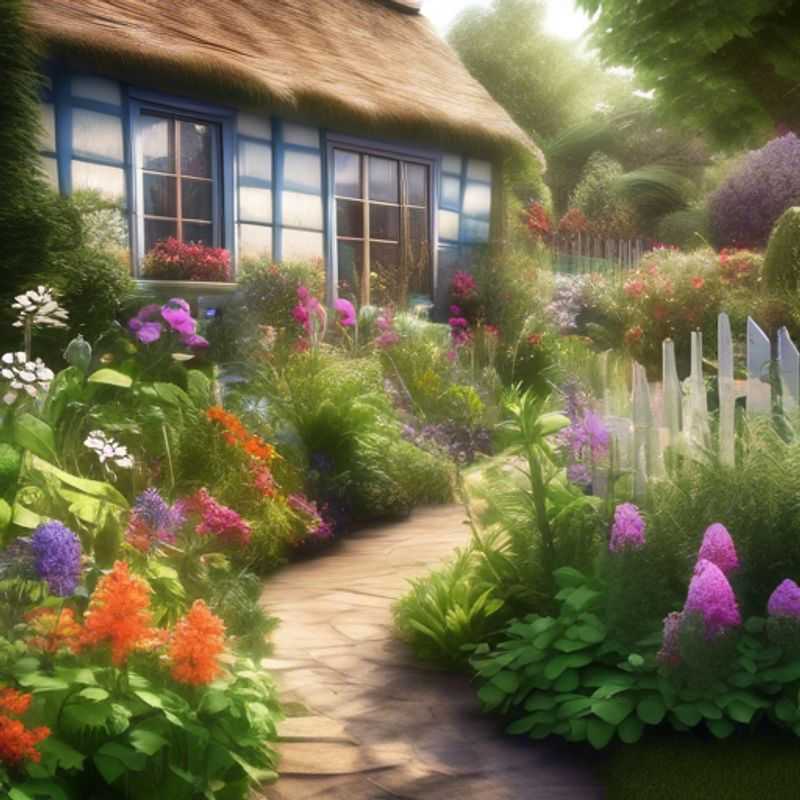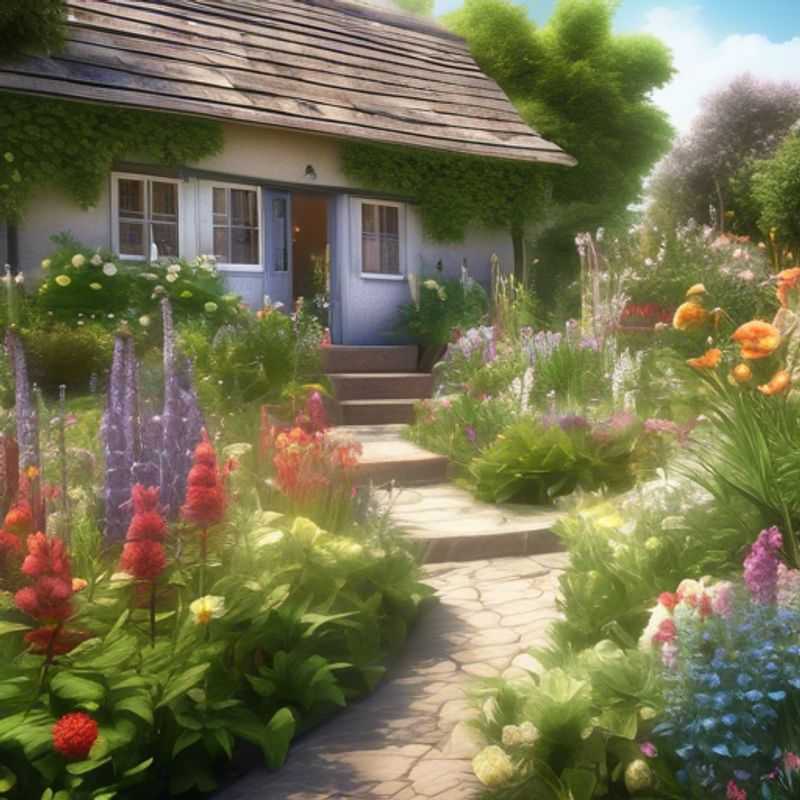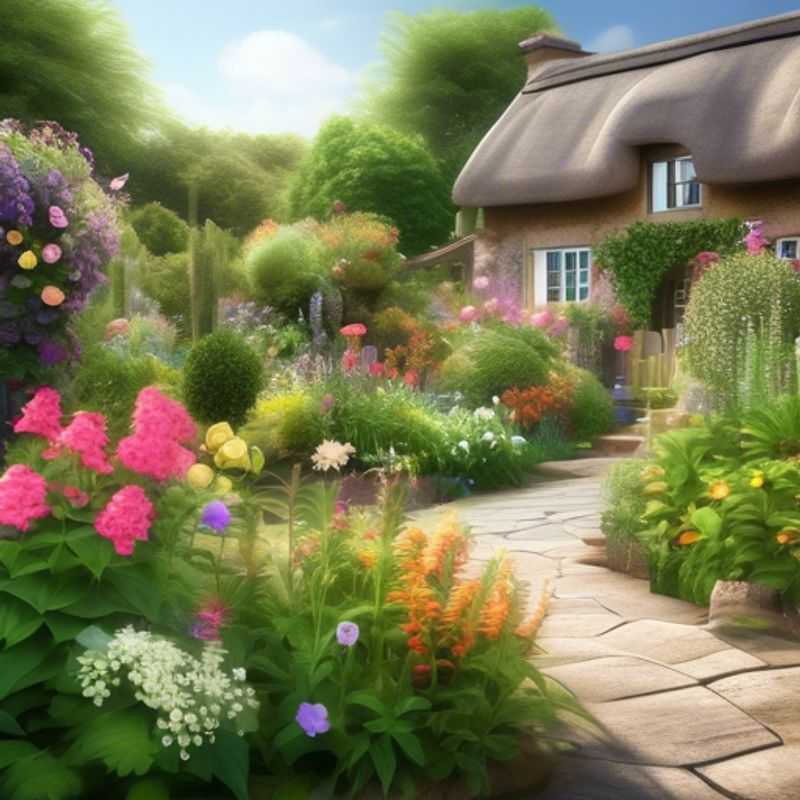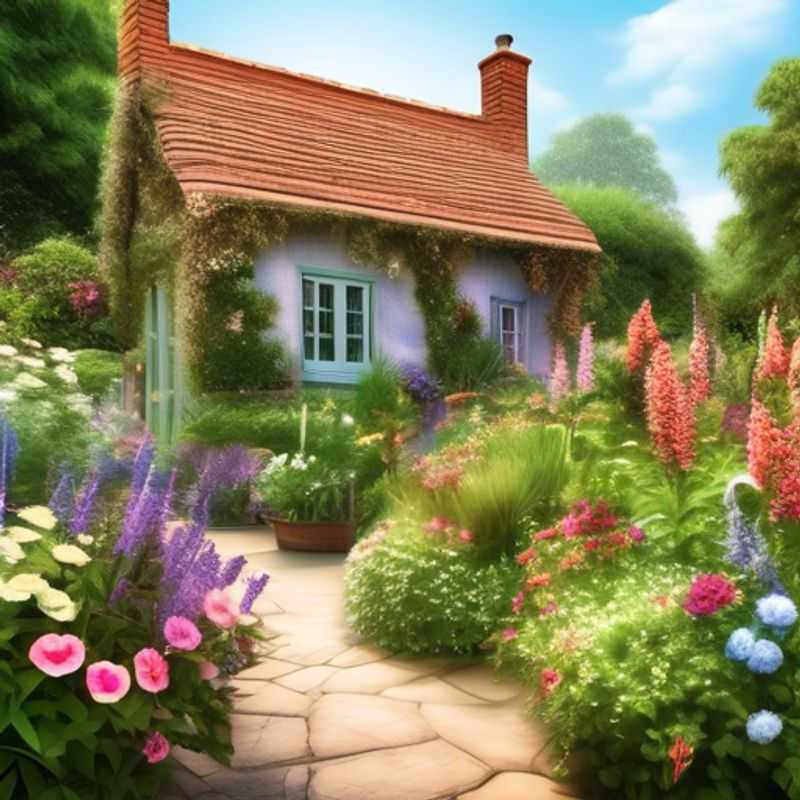Top Things to Know Before Buying Cottage Garden Plants

Top Things to Know Before Buying Cottage Garden Plants: A Practical Guide
Ah, cottage gardens. A symphony of charm, bursting with color and fragrance. A place where nature's artistry and human touch blend seamlessly. But before you embark on your own cottage garden journey, there are a few essential things to consider.

Knowing Your Garden's Climate and Soil: The Foundation for Success
Understanding the climate and soil conditions of your garden is crucial for successful gardening. It's like laying the foundation for a house – you want to ensure a strong base for your plants to thrive.
Climate refers to the long-term weather patterns of a region. Factors like temperature, rainfall, humidity, and sunlight duration impact plant growth. If your garden is in a hot, arid climate, you'll need to choose plants that tolerate drought and intense sunlight. In contrast, a cool, humid climate may suit plants that prefer shade and moisture.
Soil is the foundation on which your plants grow. It provides nutrients, water, and support. Different plants have different soil preferences. For example, some plants need well-drained soil, while others prefer heavier, clay-based soil. To determine your soil type, you can perform a simple test or consult with a local gardening expert.
Once you understand your climate and soil conditions, you can select plants that are well-suited to your garden. This will increase your chances of success and minimize the need for costly and time-consuming interventions.

Planning Your Garden: Understanding Plant Growth Habits and Mature Size
When planning your garden or landscaping project, understanding the mature size and growth habits of your chosen plants is crucial. It helps ensure they'll thrive in their designated spaces and avoid overcrowding or becoming too large for their intended location. Researching these aspects before planting will save you time and effort in the long run. Here's a breakdown of key factors to consider:
Mature Size: This refers to the plant's ultimate height and spread when fully grown. Consider factors like:
- Height: How tall will the plant become? Will it reach above windows or create shade for your desired areas?
- Width: How wide will the plant spread? Will it encroach on walkways, patios, or other plants?
- Root System: Some plants have aggressive root systems that can damage sidewalks, foundations, or underground utilities.
Growth Habits: This describes the plant's natural growth pattern. Here are some key factors:
- Upright: These plants grow vertically with a single stem or multiple stems that reach upwards.
- Trailing: These plants spread horizontally along the ground or cascade over edges.
- Vining: These plants climb vertically with tendrils or aerial roots.
- Fast-growing: These plants grow quickly and can fill a space quickly.
- Slow-growing: These plants grow at a more leisurely pace and may take years to reach their mature size.
Research Resources: A wealth of information is available online and in gardening books. Utilize reputable sources such as university extension websites, botanical gardens, and plant nurseries. When searching, use specific plant names and include terms like "mature size" or "growth habits."
Tips for Success:
- Read plant tags carefully.
- Consider the overall design of your garden.
- Choose plants that are well-suited to your climate and growing conditions.
By investing time in researching the mature size and growth habits of your plants, you'll set yourself up for a successful and enjoyable gardening experience. Happy planting!

Planting for Success: Choosing Plants for Your Hardiness Zone
Choosing plants that thrive in your area is key to gardening success. Hardiness zones are a valuable tool for this, indicating the average minimum winter temperature in a region. Knowing your zone helps you select plants that can survive the local climate.
To find your hardiness zone, use the USDA Plant Hardiness Zone Map. This free resource provides detailed information based on historical weather data.
Matching plants to your zone ensures they can withstand the coldest temperatures, minimizing the risk of frost damage and ensuring healthy growth. Remember, microclimates within your garden, such as shaded areas or near structures, can affect your zone's effectiveness.

Sunshine Secrets: Understanding Sunlight Requirements for Different Plants
Understanding sunlight requirements is essential for successful plant growth. Different plants have varying needs, categorized as full sun, partial sun, and shade.
Full sun plants thrive in 6+ hours of direct sunlight daily, typically facing south.
Partial sun plants prefer 4-6 hours of sunlight, often with some shade during the hottest part of the day.
Shade plants flourish in 2-4 hours of indirect sunlight, often under trees or sheltered areas.
Knowing these categories helps you select the right plants for your specific location and sunlight exposure.
If unsure, research the specific plant's requirements or consult a local nursery for expert advice.
Remember, consistent sunlight is key to healthy plant growth.

Watering Wisdom: Understanding Your Plants' Thirst
Understanding a plant's water needs is crucial for successful gardening. Different plants have different water requirements, influenced by factors like species, climate, soil type, and pot size.
Overwatering can be as harmful as underwatering, leading to root rot and other issues.
To determine your plants' water needs, consider researching their specific requirements.
Observing the soil is a good indicator. When the top inch of soil feels dry, it's time to water.
Avoid watering based on a schedule; instead, rely on your plants' cues.
Always use well-draining soil to prevent waterlogging.
Adjust your watering practices based on the weather, as hot and dry conditions will increase water needs.

Mindful Gardening: How to Avoid Invasive and Aggressive Plants
Invasive plant species are a serious threat to our environment. They can outcompete native plants, disrupt ecosystems, and even cause economic damage. It's important to be aware of the dangers of invasive plants and take steps to prevent their spread.
Here are some tips to be mindful of invasive or aggressive plant species:
Identify invasive species: Familiarize yourself with the common invasive plants in your area. Resources like local government websites or university extension offices can provide information and identification guides.
Don't introduce new plants: Be careful when purchasing or transplanting new plants. Check for invasive species labels or warnings before bringing plants onto your property.
Control existing invasive plants: If you find invasive plants on your property, take steps to control their spread. Methods include:
- Manual removal (pulling or digging them up).
- Chemical control (using herbicides).
- Biological control (introducing natural enemies, like insects).
Dispose of invasive plants properly: Don't simply throw them in the compost or leave them in the garden. Bag them up securely and dispose of them in a designated location.
Report sightings: If you see an invasive plant that is spreading, report it to your local authorities. They can help to manage and control the invasive plant population.
By taking these steps, you can help to protect your local ecosystem and prevent the spread of invasive plant species. For more information and resources about invasive plant species, visit your local government website or search online.

Landscaping for All Seasons: A Guide to Year-Round Interest
Creating a landscape plan that thrives throughout the year requires thoughtful consideration of seasonal changes. Understanding the nuances of each season allows you to choose plants that flourish during specific periods, providing continuous interest. It's essential to factor in the unique climate of your region and how plants respond to shifts in temperature, sunlight, and precipitation.
A well-designed landscape can offer a continuous display of color and texture. Consider incorporating plants with diverse blooming periods, foliage changes, and textural variations. For instance, a combination of spring-blooming bulbs, summer-flowering perennials, and fall-foliage trees can ensure a steady flow of visual interest.
Planning for seasonal transitions is crucial. When designing a landscape, think about how different areas will flow together and what transitions will be most appealing. You may wish to create a path that winds through a garden, showcasing distinct seasons as you walk along. This can be achieved by carefully selecting plants that bloom in succession and have foliage that changes throughout the year.
Incorporating evergreen plants is essential for winter interest. While deciduous trees shed their leaves in the fall, evergreens remain green, offering a valuable source of color and texture during the colder months. Evergreens can also provide a sense of privacy and structure to your landscape.
Plan for low-maintenance options. Consider your personal time constraints and preferences when designing a landscape. Opting for low-maintenance plants, such as native species and drought-tolerant varieties, can significantly reduce your workload.
Don't forget the practical considerations. A well-designed landscape should accommodate your lifestyle and needs. Consider the layout of pathways, walkways, and seating areas. This will ensure easy access and enjoyment throughout the year.
Budgeting for seasonal changes is important. A landscaping plan can include a variety of costs, including initial plantings, ongoing maintenance, and potential updates. Be sure to account for the costs of seasonal activities such as pruning, weeding, fertilization, and pest control.
